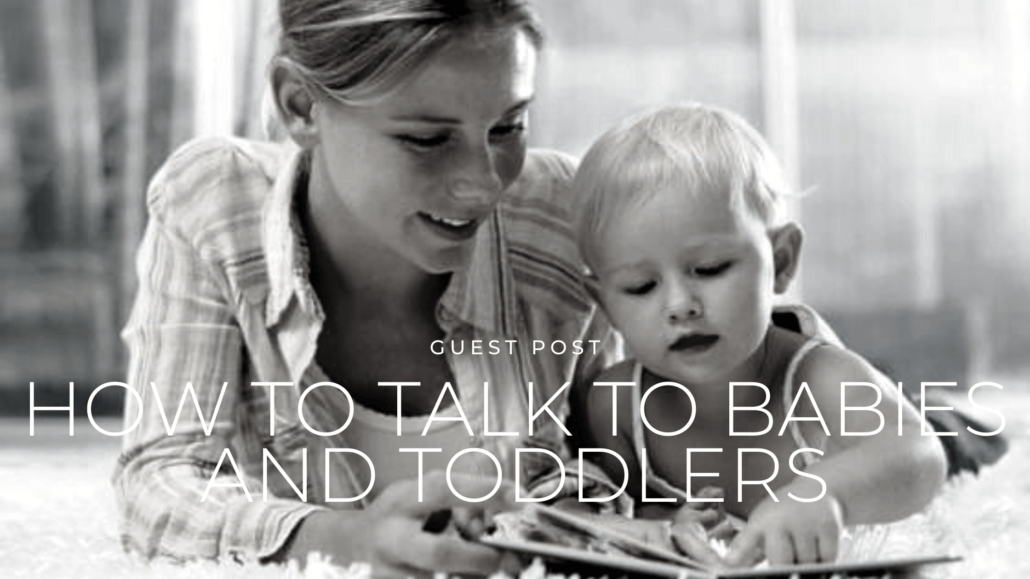How to talk to babies and toddlers
Did you know that during the first two years of life, about 75% of the infant brain is forming?
The number of brain synapses related to language learning actually peaks before 11 months of age. This is a significant window of opportunity for babies to learn languages. World renowned Infant Researcher Dr. Bob Titzer shares his top tips to help baby language development.
Use Parentese:
Use parentese when talking with young infants. Parentese means speaking in a higher-pitched voice, elongating the vowel sounds, and slightly over-enunciating words. Babies prefer higher-pitched voices. By over-enunciating, you make it easier for your baby to differentiate spoken words. I suggest using mostly parentese until your baby is around 6 months of age, then gradually use less parentese. Once your baby understands at least 100 words, then speak in a more normal voice most of the time.
Describe Your Baby’s Senses:
Talk about all of your child’s senses. Narrate or describe what your child is seeing, hearing, smelling, tasting, and touching. Think of movement as a sense and describe how your child is moving. Do this as much as you can throughout the day. Find other people who truly value your baby’s early window for language learning and get as much help as you can. Enjoy the experience and bond with your baby while helping her learn language skills.
Isolate Individual Words:
In normal speech, the sound of one word often flows into the next, making it difficult for infants to figure out that individual words exist. You can help babies learn vocabulary by saying some individual words, then showing or demonstrating the meanings of those words. This, of course, should not be done all of the time because you want your baby to learn grammar in addition to vocabulary. Allowing very young infants to see words at the same time they hear them gives babies more information. Infants may be able to use this information to figure out that individual words exist as well as where the words begin and end.
Make Language Multisensory:
Allow language learning to be multisensory instead of simply talking to your baby (where your baby only hears language). Consider adding written language, so your baby sees and hears words and sees and hears the meanings of the words. This gives babies more information to learn words. Add other senses as well. For example, allow your baby to see and hear the word hand, then touch one of your baby’s hands and say “hand” again at that precise moment. Also say, “This is your hand!” and gently touch your baby’s hand again as you say the word “hand.” Say “This is Daddy’s [Mummy’s] hand.” as you show your child your hand.
Teach the Shape Bias:
The shape bias is the tendency of infants and children (as well as adults) to generalize information about an object by its shape rather than its colour, material, or texture when learning nouns. Since the shapes of objects generally give more important information about the objects’ functions than the colour, texture, size, or other features of objects, learning the shape bias results in more efficient word learning for babies and toddlers. Infants or children who have learned the shape bias tend to learn words at a faster rate than infants and children who have not learned the shape bias. This means that over time, knowing the shape bias results in an increase in the vocabularies of infants and children. The shape bias can be learned by 17-month-old babies in four 15-minute sessions in a laboratory setting, and is displayed when a child consistently organizes objects by their shapes instead of by colour or other often-trivial features of the objects. I taught both of my daughters the shape bias prior to 8½ months of age which means they were learning words more efficiently during the window of opportunity for learning language skills.
An abundance of research shows long-term benefits for babies and toddlers who are in better language environments. For example, the most important predictor of a child’s vocabulary at age 11 was how many words had been spoken to the child by age 3. This was more important than the parents’ IQ scores, the family’s socioeconomic status, or which school the child attended. In addition, new research shows that babies who know more words by 18 months of age tend to think at faster speeds than babies who know fewer words. Therefore, teaching your baby the shape bias early – which increases the rate of learning words – could have important long-term benefits for your child. Sort objects primarily by their shapes to teach the shape bias instead of by colour or other features. To better understand the shape bias and how to teach it, and for more tips on how to talk to babies, please go to http://thescienceofearlylearning.com/shapebias/
If you want to learn more about how you can encourage your baby to learn, Dr. Titzer will be speaking at 12:15 pm on Saturday, March 6 at the Spring Virtual Bump, Baby & Toddler Expo.
Author





